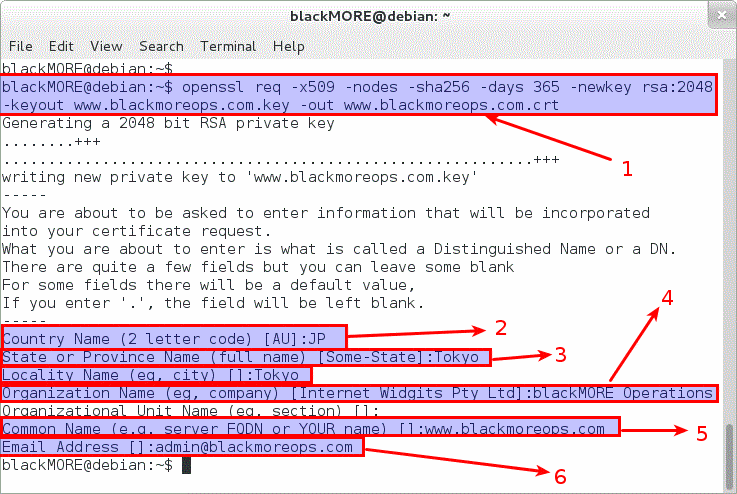Step 2: How to generate x509 SHA256 hash self-signed certificate using OpenSSL. Sha256 is part of sha2 which consists of other hash functions like sha224, sha256, sha384, sha512 etc., in which sha256 and sha512 are the popular ones. Run the below OpenSSL command to generate a self-signed certificate with sha256 hash function. Sep 12, 2014 Create a Private Key. Use this command to create a password-protected, 2048-bit private key (domain.key): openssl genrsa -des3 -out domain.key 2048 Enter a password when prompted to complete the process. Verify a Private Key. Use this command to check that a private key (domain.key) is a valid key: openssl rsa -check -in domain.key. If your private key is encrypted, you will be prompted for its pass phrase.
| # Generate Private Key and Certificate using RSA 256 encryption (4096-bit key) |
| openssl req -x509 -newkey rsa:4096 -keyout privatekey.pem -out certificate.pem -days 365 |
| # Alternatively, setting the '-newkey' parameter to 'rsa:2048' will generate a 2048-bit key. |
| # Generate PKCS#12 (P12) file for cert; combines both key and certificate together |
| openssl pkcs12 -export -inkey privatekey.pem -in certificate.pem -out cert.pfx |
| # Generate SHA256 Fingerprint for Certificate and export to a file |
| openssl x509 -noout -fingerprint -sha256 -inform pem -in certificate.pem >> fingerprint.txt |
| # Generate SHA1 Fingerprint for Certificate and export to a file |
| #openssl x509 -noout -fingerprint -sha1 -inform pem -in certificate.pem >> fingerprint.txt |
| # FYI, it's best practice to use SHA256 instead of SHA1 for better security, but this shows how to do it if you REALLY need to. |
Public Private Key Encryption

Hmac Sha256 Openssl
commented Nov 7, 2019
Here's a couple useful links related to this: |